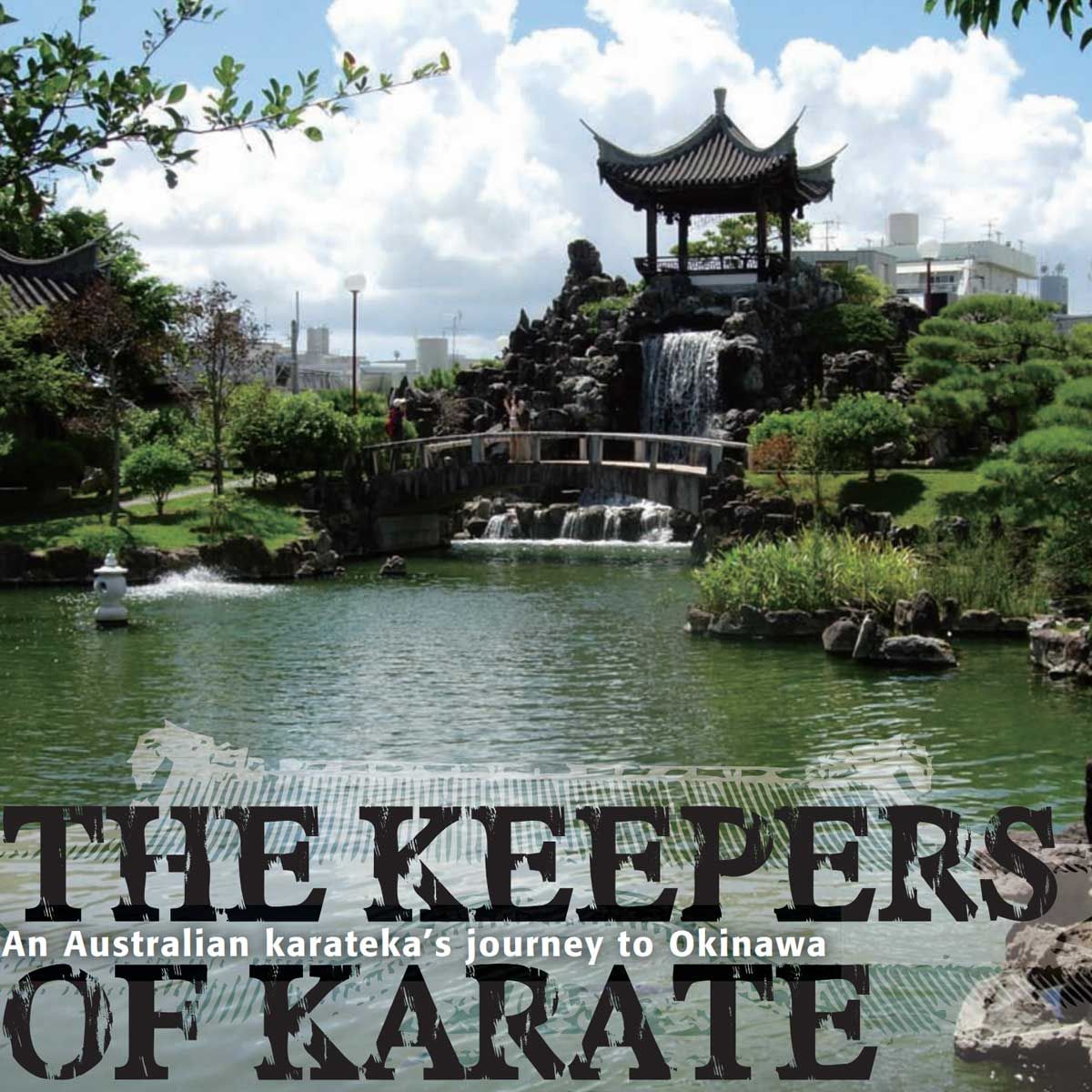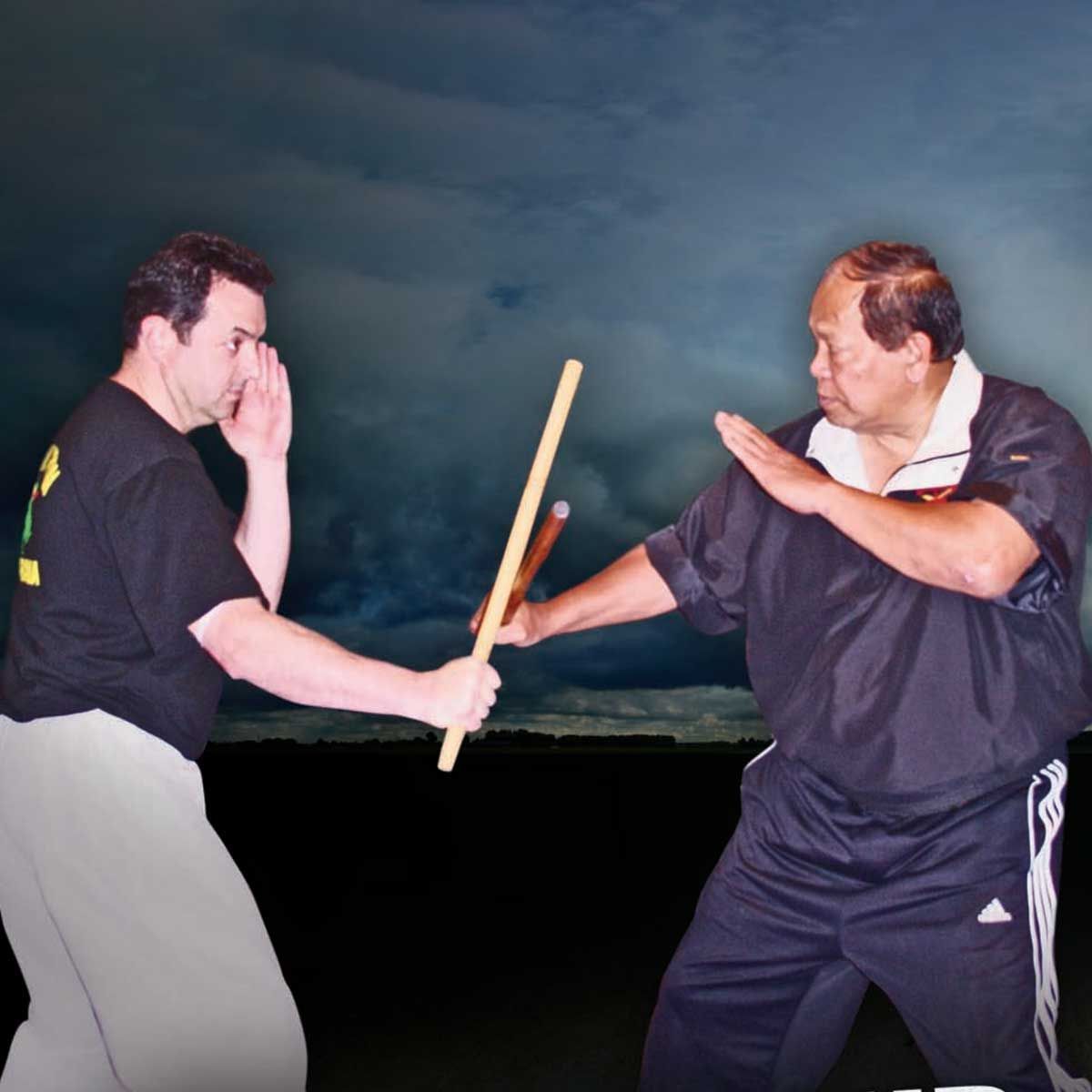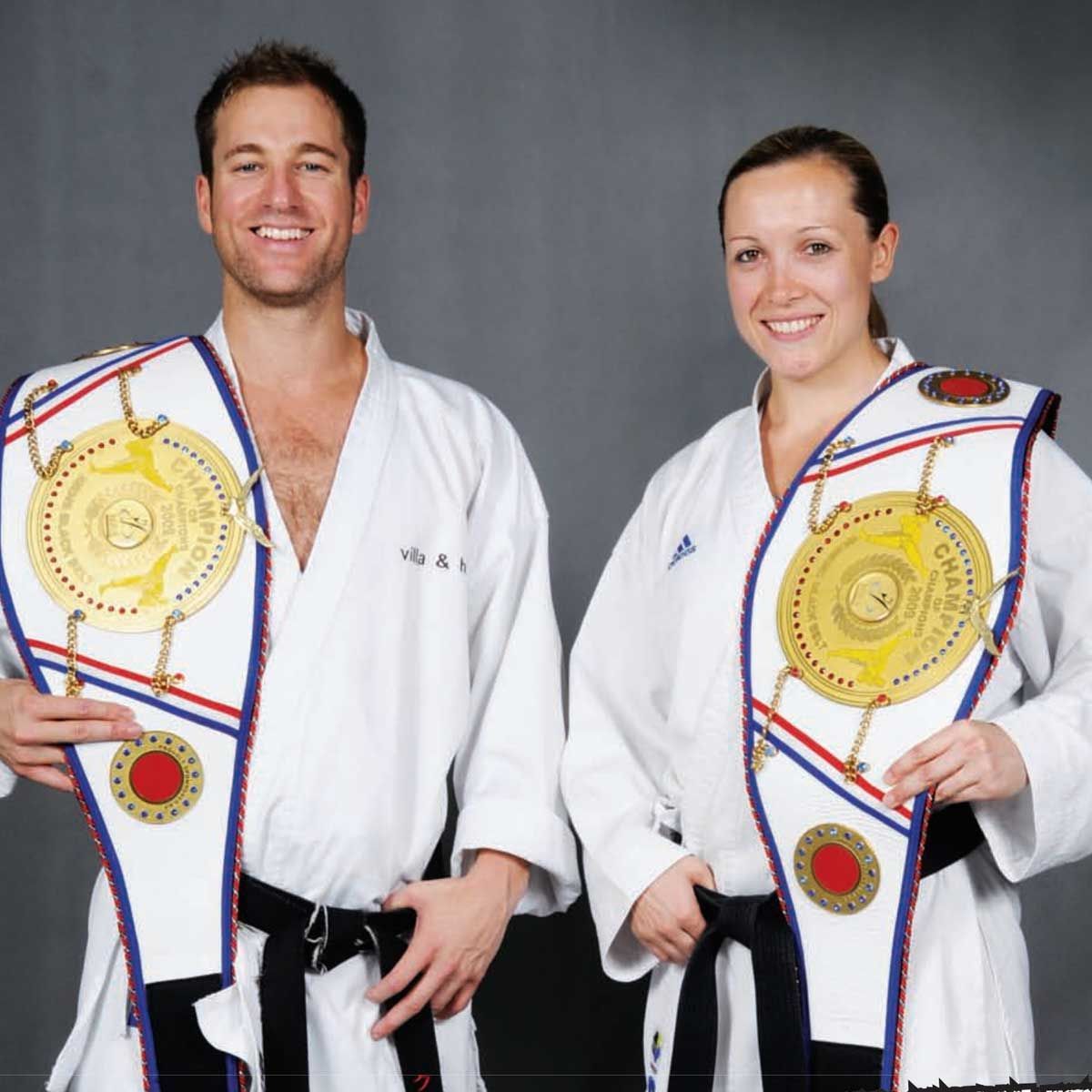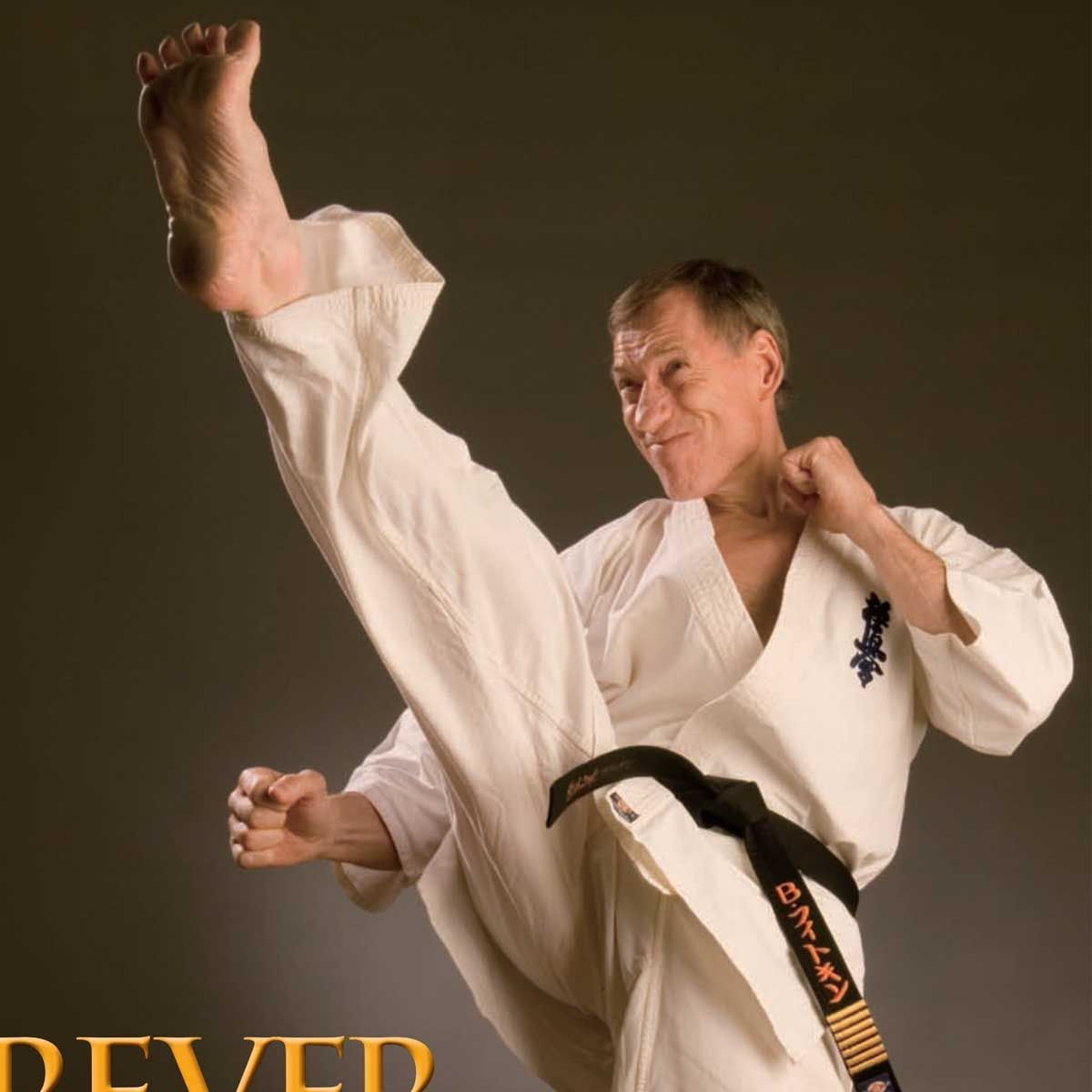MARTIAL ARTS’ CLASSICAL MAN - Willie Lim
With the passing of the masters of old, many traditional martial arts, it seems, have been modified to accommodate business interests (namely the entertainment and teaching arenas) and in the process diluted the true essence of traditional martial arts. One man doing his best to keep the traditional flame burning is taekwondo and tai chi Master Willie Lim, a stalwart of the New Zealand taekwondo scene who’s since established himself in the USA. Best known for his emphasis on analyzing and interpreting the forms (kata) passed down from the arts’ originators, Lim is on a quest to retain the practical techniques hidden within them.
STORY BY DAVID ROBSON
Anyone who was part of the New Zealand martial arts community in the 1970s and ’80s, or indeed the broader fitness industry, would likely have heard the name Willie Lim. A martial arts icon, Lim began his teaching career in 1970. While operating several fitness centres, he pioneered taekwondo, in which he currently holds an 8th Degree Black-belt, and tai chi in New Zealand. Born in Penang, Malaya, in 1946, Master Lim’s first foray into martial arts in 1961 saw him tackle a mixture of judo and Kyokushin karate, after being influenced to do so by an old friend of his father.
In the years since, he has attained a 7th Degree Black-belt in Ryukyu Kempo karate and expertise in Sing Ong tai chi, along with his taekwondo credentials. While based in New Zealand, Lim established himself as a leading martial arts instructor and taught many people (this author included) the form, function and philosophy behind what has become one of the world’s most popular martial forms: taekwondo. “I believe I learnt a lot about myself from teaching TKD and from my own mistakes,” says Lim. “This helped me to be a better teacher and, businesswise, everything just fell into place. I believe a lot of the success occurred through being in the right place at the right time and having a strong student base that was very supportive of what I did. I would say at one point we would have been the most active group and the largest operating in New Zealand.”
As Lim evolved as a martial artist, demand for his expertise increased and in 1989 he moved from the country he so impacted to share his knowledge internationally. Since leaving New Zealand, Master Lim has specialised in analysing the various forms or hyungs of the Korean martial art and how they specifi cally relate to realistic self-defence. Says Lim: “Upon leaving New Zealand I based myself near San Francisco and taught applications of karate and TKD forms and private selfdefence classes. I also found a new direction by immersing myself in the study of tai chi. Presently I teach tai chi where I am based at the different resorts here in Scottsdale, Arizona, and in Jamaica, and I also teach at cancer centres using this art as a healing modality. I travel to Europe twice a year to teach applications of forms and have been doing that for 19 years now. I also teach in Malaysia and Thailand yearly.” Underpinning the applications concerning the various styles Master Lim has taught over the past 40 years are the various forms or kata, which he considers to be of critical importance to the mastering of each style as originally intended. “The kata contain the life-preserving techniques of the masters,” said Lim in a 1994 interview. “These were well hidden within the kata and were only passed on to a privileged few — in some cases the fi rst born male.” Master Lim is critical of how various kata have been diluted since their inception. “Kata as we are taught today is too simplistic,” Lim continues, “as it dwells in the realm of block, punch and kick. Even when we get to Blackbelt, we are still practising elementary interpretations, only with more finesse and power.” Asked how he has evolved as a martial artist throughout the course of his career, Master Lim says, “I look at everything as a journey and the search for the truth in my own eyes.”
Perhaps controversially, Master Lim is also known for his belief that many martial artists today are products of watered-down systems. “What we are learning today in terms of karate/TKD has already been watered down, hence the reliance on strength and brute force,” he asserts. “Real art relies very little on that. Martial artists buy into a structure and, because of that, buy into the hype of rank recognition. Many can talk the talk but very few can walk the walk.” Through his belief in retaining the purity and integrity of the martial styles he teaches by capturing their true essences, Master Lim has also become known as an authentic practitioner of his craft. For him the martial arts is all about mastering a process, not attaining rank. “There are so many ways that the arms and legs can move and the way certain techniques can be applied. I meet different martial artists who tell me about their systems and boast of the number of techniques they have, of the ranks they hold in different martial arts. While these are good people, I tell them I have one concept and I keep refining this concept before walking away. In martial arts any system is a process. People keep learning more forms as they buy into a structure. You have all the alphabets in the world, but can you form the letters? That is what the martial arts are about.” Once an instructor using a systematised class structure to teach his style of TKD, Master Lim eventually broke away to become a martial arts ‘freelancer’ and a self-confessed rebel of sorts.
He shifted from organised martial arts federations with their inherent political structures to concentrate on what he does best: teaching authentic martial arts with no restrictions: “Federations are fi ne and good if they really look after the people that support them, but often it is just a structure to feed those at the top,” Lim argues. “When people buy into a structure, they clamour to be what this organisation or that stands for. The strength of a martial artist or organisation is not the piece of paper that they issue but the respect that you have without that paper. There are so many masters around. No-one can make himself or herself a master, it is the people they have taught through the years and the high regard in which they are held the gives credence to that title. I prefer to be able to work with anyone, without having any restrictions placed on me.” Asked if there is a common thread that runs through all martial styles, a particular essence a martial artist, irrespective of their art, should aim to understand and derive from, Master Lim answers: “Irrespective of styles, we are all on the same journey. Some get there faster, others slower. We all have different ideas of what is right or wrong and what we choose to learn is based upon personal preference. The sooner we understand this, the better the world will be for the martial artist.” In taekwondo there is the sporting side (which is usually optional) along with the traditional method instrumental in learning the style’s nuances.
For those who train specifically to enter tournaments, Master Lim has the following advice: “The practitioner must have a comprehensive understanding of the arsenal they have and to realistically know what they can do with it in a sporting situation, and his physical condition must be up to par so as to not injure himself and his partners in this context.” And what does TKD have to offer as a martial art compared other arts, including tai chi? In what ways can these two styles compliment the other? Says Lim, “TKD, like any combat sport, can be used for self-defence if the exponent has a realistic level of understanding of the art, but tai chi is an art that refines all the other arts if you know what you are looking for. Tai chi can help the TKD exponent learn to be soft and have a better flow, and thus move better.” The key to becoming a successful martial artist, according to Lim, is “to have a good head on them and to understand that they are on a journey and to get the help of those with better experience to guide him, and to mentally stay focused on the journey.” As for the health benefits on offer to the martial artist, Lim points out that each art has its merits at different stages of life. “If I were young then I would consider a pugilistic art like karate, kung fu or TKD most effective, as this would give me a strong body while helping me focus on certain aspects of the art,” the master proposes. “At this point in my life I would consider tai chi more suitable for me as I need to stay safe and the training demands my mind’s ‘presence’.” When pressed as to whether there exists a superior combative art, Lim replies with a rhetorical question of his own: “Baked beans are baked beans — the question is, what brand do you prefer?” he asks. “The exponent makes the style effective. No, I do not believe that any one system has a monopoly on effectiveness. The whole individual that understands his system well would be the best advert for his system.” And this, it seems, fits perfectly with Master Lim’s martial arts philosophy: “There is no destination in real learning — we are perpetually evolving.” □
Blitz Martial Arts Magazine, JANUARY 2010 VOL. 24 ISSUE 01













